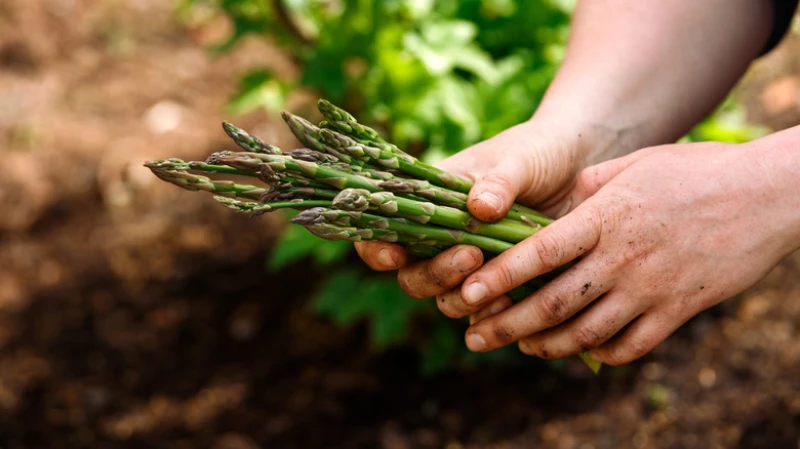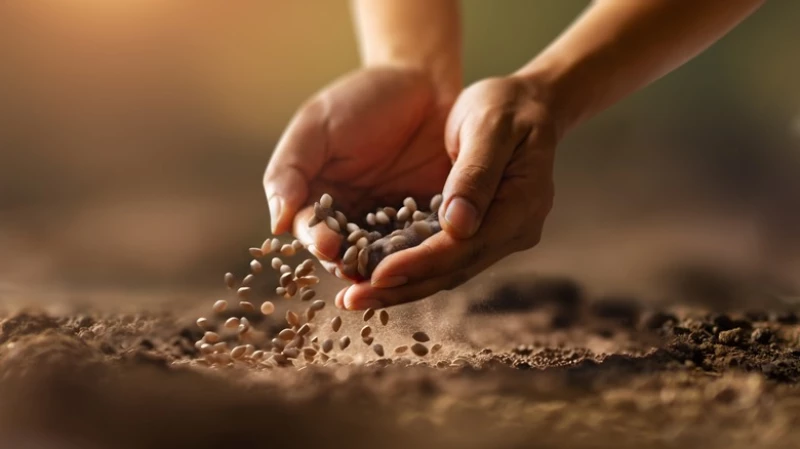Asparagus (Asparagus officinalis) is a perennial vegetable known for its hardiness in USDA zones 3 through 10. This plant can produce delicious spears for 15 to 20 years, making it a favorite among gardeners. However, growing asparagus can be a challenging task.
Typically, it takes about three years from planting seeds to harvesting asparagus. Many gardeners opt to grow asparagus from crowns, which are more developed and can lead to a quicker harvest, albeit at a higher cost. Growing asparagus from seeds requires patience and care, but it can be a rewarding experience.
The process involves planting and nurturing the seeds, planting them deeper in the first year, providing proper care in the second year, and finally harvesting the asparagus in the third year. While it may take more time, growing asparagus from seeds can be successful with dedication.
Planting asparagus seeds

When starting your seeds, you can choose to grow them in separate pots indoors or in your garden, but after a year they will need to be transferred and planted deeper in the soil. Your seeds should be planted in spring after being submerged in water for several hours or overnight. This will aid your asparagus seeds in starting the germination process. Within two to eight weeks, your vegetable plants will start to sprout.
If you'd prefer to start growing your asparagus seeds indoors in pots, you will be able to start as early as February since you won't need to worry about chilly outdoor temperatures. These vegetables prefer that their soil is between 70 and 85 degrees Fahrenheit when germinating and should be planted ¼ to ½ inch deep in well-draining soil, such as sandy soil. In the weeks before your seeds germinate, make sure the soil stays moist by giving your plants a little water every few days. You'll also need to place your plants in an area with full sun after they sprout. When about 12 weeks have passed and outside temperatures are staying above 60 degrees, you can transfer your asparagus to your garden. Your asparagus seedlings will need to be in rows that are distanced 3 to 6 feet apart. In each row, your seedlings should have 18 inches of space between them.
Planting and Caring for Asparagus Plants

For those who prefer planting seeds directly in the garden, it's advised to wait until the risk of frost has passed. Plant the seeds 3 inches apart and 1 inch deep in the soil, with rows spaced 12 inches apart. Once the seeds sprout, water them one to two times per week and cover the crowns with soil as they grow. In the fall, use straw or mulch to protect the plants from dropping temperatures.
The following year after planting your seeds, it's time to move the asparagus plants to their permanent location in the garden. Choose an area with ample sunlight and deep, well-draining soil. Consider the height of these plants, as they can cast shade on other garden crops. For example, planting dill near asparagus can benefit both plants. Carefully remove the year-old crowns from the soil in early spring, ensuring the roots remain undamaged. Dig trenches in the garden to accommodate the crowns, up to 12 inches deep in sandy soil and 8 inches in clay soil.
Are you ready to start your own asparagus garden? Here's a simple guide to get you started:
- Prepare a trench in your garden, making sure it's deep enough to space each crown about a foot apart.
- Save the dirt you dig up, as you will need it to cover the base of the plant as it grows.
- Place your asparagus plants in the trench, cover them with a few inches of soil, and water thoroughly.
- Watch as the plants grow into ferns, and remember to prune the asparagus tops each spring or fall.
- After a couple of years, you should be able to enjoy a bountiful harvest of delicious asparagus.







